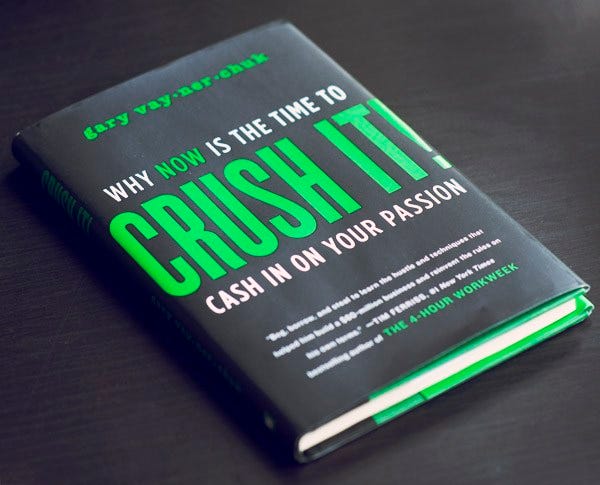Introduction:
In today’s digital age, reaching younger generations such as Gen Z and millennials is essential for businesses looking to remain relevant and competitive. However, these groups have unique characteristics and preferences that require a tailored marketing approach. “The Gen Z Frequency: How Brands Tune In and Build Credibility” by Gregg L. Witt and Derek E. Baird provides valuable insights and strategies for marketers looking to connect with these generations. In this article, we’ll explore some of the key takeaways from the book and examine real-life examples of brands that have successfully implemented these strategies.
Framework:
The book “The Gen Z Frequency” outlines a framework for marketing to younger generations based on four key principles: “Disruptive Collaboration,” “Innovation,” “Shared Value,” and “User-Centricity.”
Disruptive Collaboration:
This principle emphasizes the importance of collaboration and co-creation with younger generations. Brands should seek to involve these groups in the development of products, services, and marketing campaigns. This not only increases engagement and loyalty but also ensures that the brand stays relevant and innovative.
Example: Coca-Cola’s Share a Coke campaign is an excellent example of disruptive collaboration. The campaign encouraged customers to share a Coke with a friend whose name was on the bottle, creating a sense of personalization and community. The campaign was a massive success, generating over 500,000 photos and posts on social media, and increasing Coca-Cola’s sales by 2.5%.
Innovation:
Younger generations crave innovation and novelty. Brands should seek to innovate in all aspects of their business, from products and services to marketing and customer service. This not only appeals to younger generations but also sets the brand apart from competitors.
Example: Nike’s Flyknit technology is an excellent example of innovation. The technology uses a single piece of yarn to create a seamless upper for running shoes, reducing waste and increasing efficiency. The technology was a hit with younger generations and helped Nike increase its market share in the running shoe category.
Shared Value:
Younger generations are socially conscious and value-driven. Brands should seek to align themselves with causes and issues that are important to these groups. This not only helps to build credibility and loyalty but also contributes to a better world.
Example: TOMS Shoes is an excellent example of shared value. The company donates a pair of shoes to a child in need for every pair of shoes sold. This not only helps to create a better world but also appeals to socially conscious younger generations.
User-Centricity:
Younger generations value personalized and authentic experiences. Brands should seek to create personalized experiences that cater to the unique preferences and needs of these groups. This not only increases engagement and loyalty but also creates a sense of community and belonging.
Example: Starbucks’ My Starbucks Rewards program is an excellent example of user-centricity. The program offers personalized rewards based on customers’ preferences and behavior. This not only increases customer loyalty but also creates a sense of community among Starbucks customers.
Real-Life Examples:
Several brands have successfully implemented the principles outlined in “The Gen Z Frequency” to connect with younger generations. Here are a few real-life examples:
Glossier:
Glossier is a beauty brand that has successfully connected with younger generations through disruptive collaboration and user-centricity. The brand involves its customers in the product development process and uses social media to create a sense of community and belonging among its customers. Glossier has been praised for its authentic and relatable marketing campaigns, which feature real customers and promote natural beauty.
Warby Parker:
Warby Parker is an eyewear brand that has successfully connected with younger generations through innovation and shared values. The brand disrupted the traditional eyewear industry by offering affordable, stylish glasses online, and donating a pair of glasses to someone in need for every pair sold. Warby Parker’s innovative approach and social consciousness have helped the brand appeal to younger generations.
Airbnb:
Airbnb is a travel brand that has successfully connected with younger generations through shared values and user-centricity. The brand has positioned itself as an alternative to traditional hotels and promotes the idea of “living like a local.” Airbnb also allows hosts to set their own prices, creating a personalized and authentic experience for travelers. The brand has been praised for its social consciousness, with initiatives such as the Open Homes program, which provides free housing for people in need during crises.
Conclusion:
Connecting with younger generations such as Gen Z and millennials requires a tailored marketing approach that emphasizes collaboration, innovation, shared values, and user-centricity. Brands that successfully implement these principles can build credibility and loyalty among these groups and remain relevant and competitive in today’s digital age. By following the framework outlined in “The Gen Z Frequency,” brands can tune in to the preferences and needs of younger generations and create personalized and authentic experiences that resonate with these groups.



